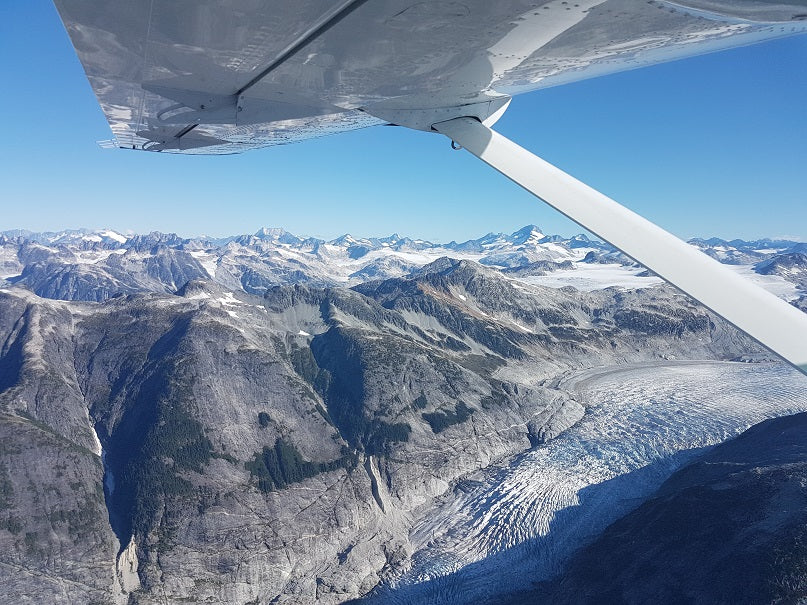 Featured: Q&A with NENA Founder & CEO Rodger Upton
Featured: Q&A with NENA Founder & CEO Rodger Upton In Vancouver, we’re fortunate to experience all four seasons (with a good balance of rain in each one, of course!). However, if you go a little further north, you’ll encounter a very different, colder world. We got to see this on our latest visit to our clay dig site, up the coast of British Columbia from Vancouver. The site is such a special place for Team NENA, as it is the source of all of our products and our inspiration. It is a place few people have seen, and we wanted to share the journey with you, along with some thoughts from our founder and CEO, Rodger Upton. Our voyage starts at a small airport in Vancouver, where we board a seaplane to take us to the glacial ice fields. This is no glamorous private plane experience and requires experienced and talented pilots. While the flight may not be for the faint of heart, the scenery more than makes up for the turbulence. Nearing at the site, the scenery becomes dramatic as the ice field comes into view. This is the source of the mineral rich clay in all of our products. You can see the clay as it migrates down the sides of the glaciers before it meets the ocean. At NENA, we are committed to protecting this pristine environment. When we are conducting a dig, we use temporary filtration barriers to mitigate any dispersal of the clay into the surrounding waters’ that may impact marine life. The glacial flow is continuously, if slowly, moving more and more clay into the water, so the oceanic clay is also being replenished naturally.

Q&A with NENA Founder & CEO Rodger Upton
Q: Why is the Glacial Clay dig site so special? Rodger: The head of Bute Inlet is a truly magical and mystical place that is home to the Homolco First Nations band. Our dig site is at the mouth of the Homolco river, and at the base of the Homolco Ice Fields, where the clay has been derived. The clay is fed by a continuous flow of glacial flour (glacial clay).
Q: How much clay is there? Rodger: There are two large deposits of over 3.8 bill kilos of clay at the base of the glacier. The consistency of the clay has been tested and proven to a depth of 25 meters at this location.
Q: Is your mining operation sustainable? Rodger: When we visit the head of Bute to extract our clay, we do so with an independent professional body working under the guide and direction of the ministry of mines and environment, along with 6 other government agencies.

Q: How do you ensure environmental protection? Rodger: We work with care and consideration to the environment, leaving zero footprint. Once we have completed our dig, we remove the filtration drape from around the dig site, and begin the approximately 5-day journey back to our HQ. Once the clay arrives, we screen, process, and package the products.
Q: What is the best time to harvest Glacial Clay? Rodger: Weather can be tempestuous in Bute Inlet, with winds in excess of 75 km / hr, and waves higher than 5 feet. We select the optimal time to visit the site in the summer or fall months.
Q: What do you enjoy most about going to Bute Inlet? Rodger: When on site, you are taken to a place that has been a significant part of the Homolco First Nations life; you can only then realize the serenity, beauty and spirit of the place, which the Homolco hold dear to this day. The abundance of the sea life, including whales, dolphins and wildlife like bears, and eagles, easily takes you to that special place, and reminds you how precious this clay is, as it has also been highly-valued and used by the Homolco First Nations for centuries. To see the birthplace of our clay is a special experience, and one we are thrilled to share with you. While you may not be able to visit the glacial ice fields yourself, you can utilize the power of these remarkable and ancient sources of water and minerals with each and every NENA product. --
We hope you enjoyed this virtual voyage to the clay! To learn more visit us at https://nenaskincare.com



